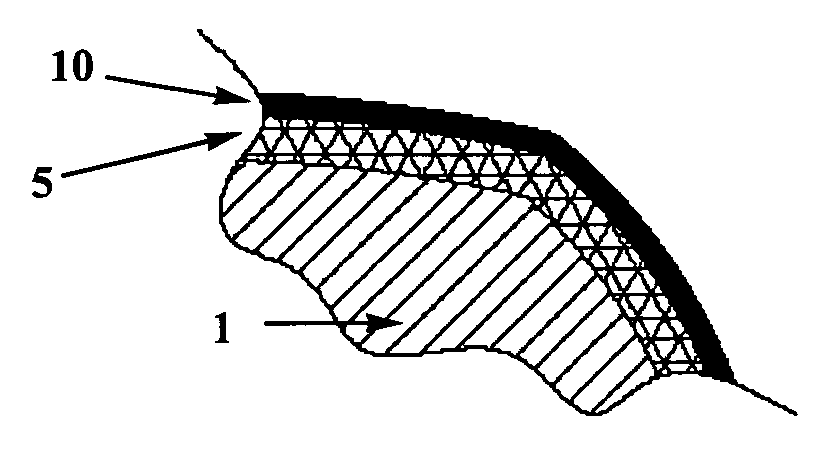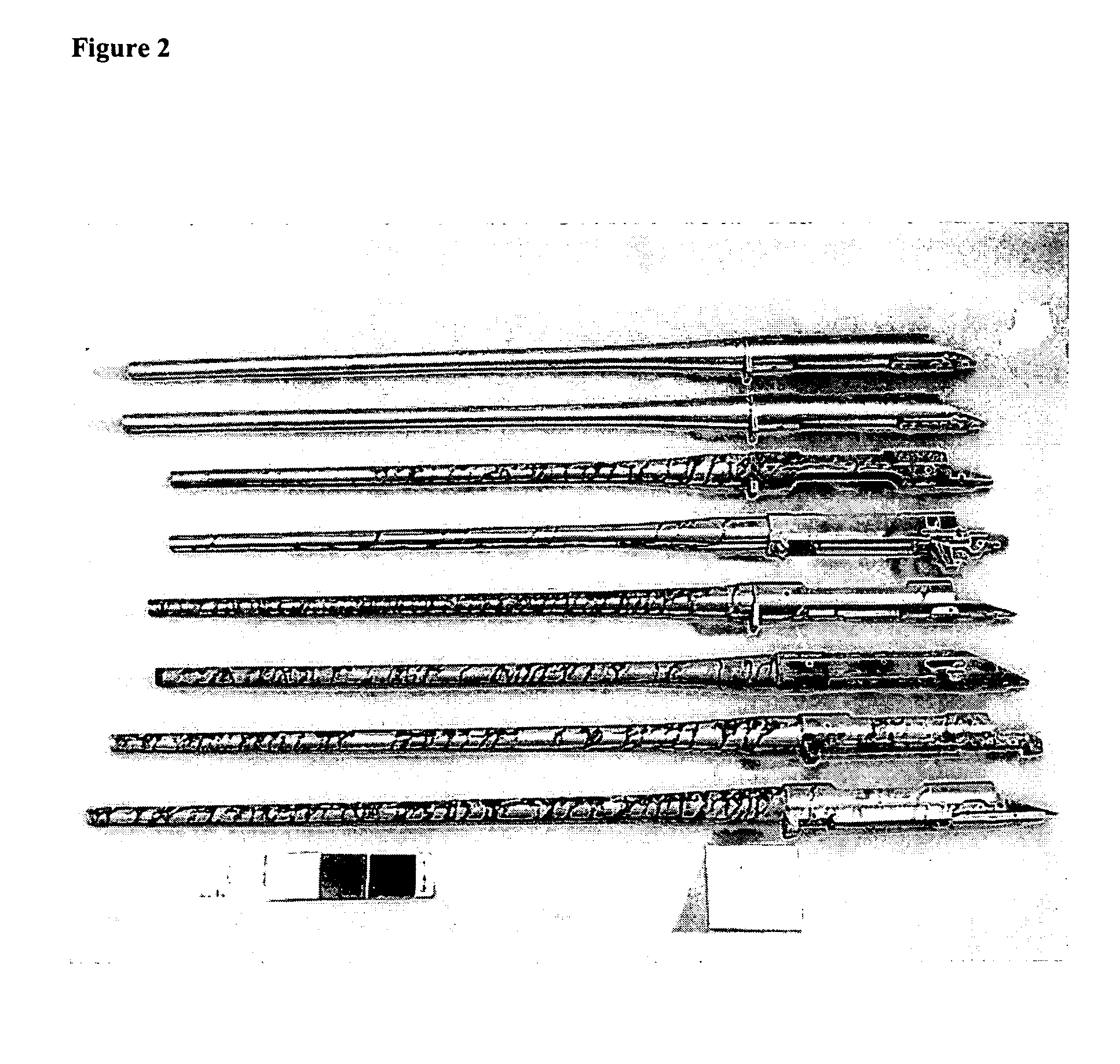Firearm with enhanced corrosion and wear resistance properties
- Summary
- Abstract
- Description
- Claims
- Application Information
AI Technical Summary
Benefits of technology
Problems solved by technology
Method used
Image
Examples
example 1
Comparative Corrosion Data from Rifle Barrels
[0062] Rifle barrels prepared according to this invention were tested in a salt spray apparatus to examine accelerated corrosion, and compared to various other rifle barrels that did not incorporate a combination of coatings according to this disclosure. Testing was performed both at Remington and by IMR Test Labs, Lansing N.Y., according to the testing protocol disclosed in ASTM B 117-97 or ASTM B 117-03. The inventive barrel that was tested comprised a stainless steel Remington M / 700 rifle barrel, coated with a first layer of electroless Ni (ENi) plating, followed by a second layer of ZrN (zirconium nitride) PVD coating. The Remington M / 700 rifle barrel coated in this manner was designated Remington M / 700XCR. Coating specifications are as follows. The ENi coating was applied to a thickness of from about 0.00005 inches to about 0.00015 inches, using high phosphorous nickel plate. The ZrN (zirconium nitride) coating was applied to a thi...
example 2
Corrosion Testing Using Rifle Barrels Coated with Ceramic Coating Only—Single Layer
[0066] Rifle barrels were prepared according to this invention in which the stainless steel barrel was coated using a thin film “second layer” coating material only over the steel, and not employing a first layer coating of corrosion resistance metal. The inventive barrel was tested in a salt spray apparatus and compared to a standard uncoated rifle barrel. Corrosion testing was performed according to the protocol disclosed in ASTM B 117-97 or ASTM B 117-03, with the exception that there were no collectors in the chamber. However, each barrel tested was subjected to identical conditions. A standard stainless steel barrel was coated with zirconium nitride to a thickness of about 0.5 μm to about 1 μm and tested. Samples prepared in this manner performed better than uncoated control samples, but did not achieve the degree of corrosion resistance of the samples coated with both corrosion resistance meta...
example 3
Corrosion Testing Using Rifle Barrels Coated with Ceramic Coating Only—Two Layers
[0069] Rifle barrels were prepared according to this invention in which the stainless steel barrel was coated using two ceramic coating layers over the steel, and not employing a first coating of corrosion resistance metal. In this example, two tests were conducted. First, two ceramic coatings layers of zirconium nitride (PVD) were employed. Second, a layer of chromium nitride (PVD) under a layer of zirconium nitride (PVD) was employed. In both instances, samples performed better than uncoated control samples, but did not achieve the degree of corrosion resistance of the samples coated with both corrosion resistance metal and ceramic (zirconium nitride) material.
PUM
 Login to View More
Login to View More Abstract
Description
Claims
Application Information
 Login to View More
Login to View More - R&D
- Intellectual Property
- Life Sciences
- Materials
- Tech Scout
- Unparalleled Data Quality
- Higher Quality Content
- 60% Fewer Hallucinations
Browse by: Latest US Patents, China's latest patents, Technical Efficacy Thesaurus, Application Domain, Technology Topic, Popular Technical Reports.
© 2025 PatSnap. All rights reserved.Legal|Privacy policy|Modern Slavery Act Transparency Statement|Sitemap|About US| Contact US: help@patsnap.com



